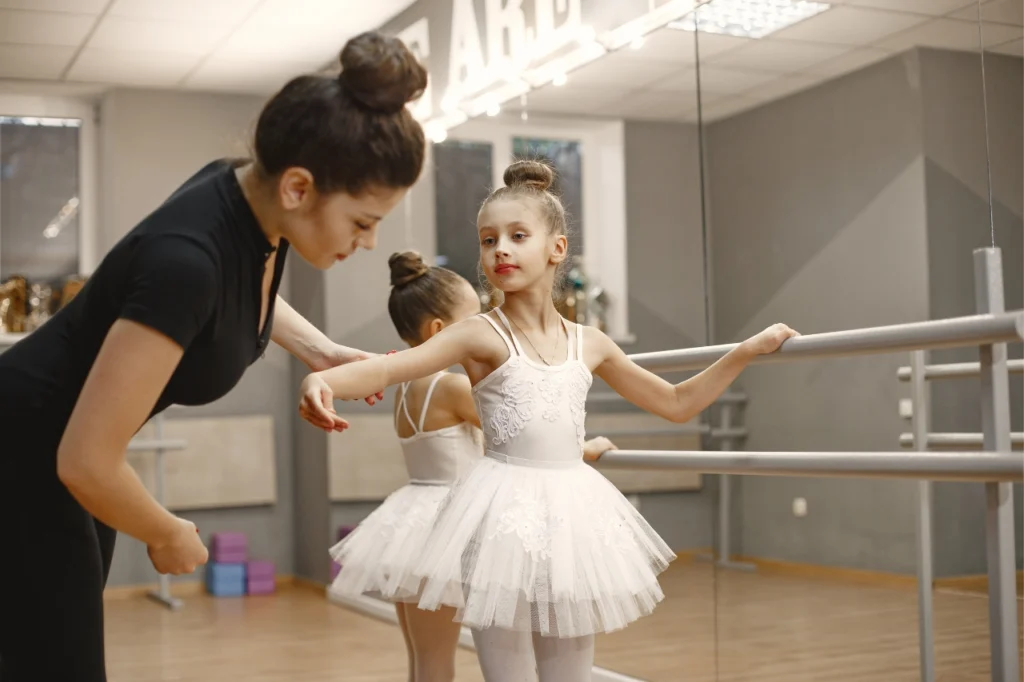Ballet classes are more than just a place to dance. They are environments where young dancers learn valuable lessons in respect, discipline, and teamwork. Understanding and practicing proper ballet etiquette is essential for any young dancer looking to succeed both in and out of the studio. This guide covers the essential aspects of ballet etiquette that every young dancer should learn, helping them navigate their classes gracefully and respectfully.
Understanding Ballet Etiquette
Understanding ballet etiquette is essential for any young dancer starting their journey in this classic art form. Ballet etiquette encompasses a range of behaviors essential for maintaining the discipline and decorum of ballet classes and performances. It includes understanding how to wear the correct attire, learning where and how to stand in the studio, respecting the hierarchy and roles within a ballet environment, and knowing how to enter and exit the dance floor correctly. Adhering to these unwritten rules not only shows respect for the tradition of ballet but also helps maintain an organised and focused atmosphere conducive to learning and performing.
Respect for Teachers and Peers
Ballet is built on a foundation of respect. Respect for the art form, the teacher, and fellow dancers. Young dancers should learn to listen attentively, follow instructions carefully, and accept corrections graciously. Showing respect also involves being polite and supportive of their peers, fostering a positive and encouraging environment for everyone.
Punctuality and Preparedness
Arriving on time for class, dressed appropriately in the required attire, and with a neat appearance, shows respect for the teacher and the class. It also ensures the dancer is ready to participate fully and does not disrupt the lesson flow.
Key Elements of Ballet Class Etiquette
Attire and Grooming
Proper attire and grooming are about aesthetics, safety, and functionality. Young dancers should wear the prescribed uniform, usually leotards, tights, and ballet shoes, with hair neatly pulled back from the face. This discipline helps dancers learn the importance of presentation and ensures the teacher can see their body alignment and movements.
Use of Studio Space
It is important to understand how to share studio space with others. Dancers should learn to be aware of their surroundings, avoid crowding others, and take turns at the barre and across the floor. They should also keep personal belongings tidy and out of the way to prevent accidents and maintain a clutter-free environment.
During the Class
Listening and Observing
Active listening and observation are essential in ballet. Young dancers should observe quietly when not dancing, learning from others’ corrections and demonstrations. This not only shows respect but also enhances their own learning experience.
Asking Questions Appropriately
While curiosity is encouraged, knowing when and how to ask questions is essential to classroom etiquette. Questions should be relevant and asked at an appropriate time, usually at the end of the demonstration or when the teacher offers the opportunity.
After Class
Showing Appreciation
It’s traditional to thank the teacher at the end of the class with a simple “thank you” or, more formally, with a reverénce, a gesture of respect. This shows gratitude and reinforces the formal, respectful nature of the ballet class.
Responsibility for Personal Space and Cleanliness
Dancers should take responsibility for any mess they create, such as sweeping up hair pins or tissues. Leaving the studio as clean as or cleaner than they found it shows respect for the space and the next class coming in.
Why Ballet Etiquette Matters
Understanding and adhering to ballet etiquette helps young dancers develop into disciplined and respectful individuals. These lessons go beyond the dance studio, aiding their personal growth and social interactions. Ballet etiquette teaches young dancers about responsibility, the importance of following rules, and how to conduct themselves in a formal setting.
Conclusion
Learning ballet etiquette is as important as mastering the technical aspects of ballet itself. For young dancers at the beginning of their ballet journey, understanding these unwritten rules will not only enhance their learning experience but also help them gain the respect of their teachers and peers. The discipline and respect learned through ballet etiquette can be a strong foundation for success in future endeavors.
Kew School of Dance offers structured classes in a supportive and respectful environment. Contact us today at 03 9123 8458 / 0410 311 008 to learn more about our programs and how we can help your child grow into a well-rounded dancer and individual.








